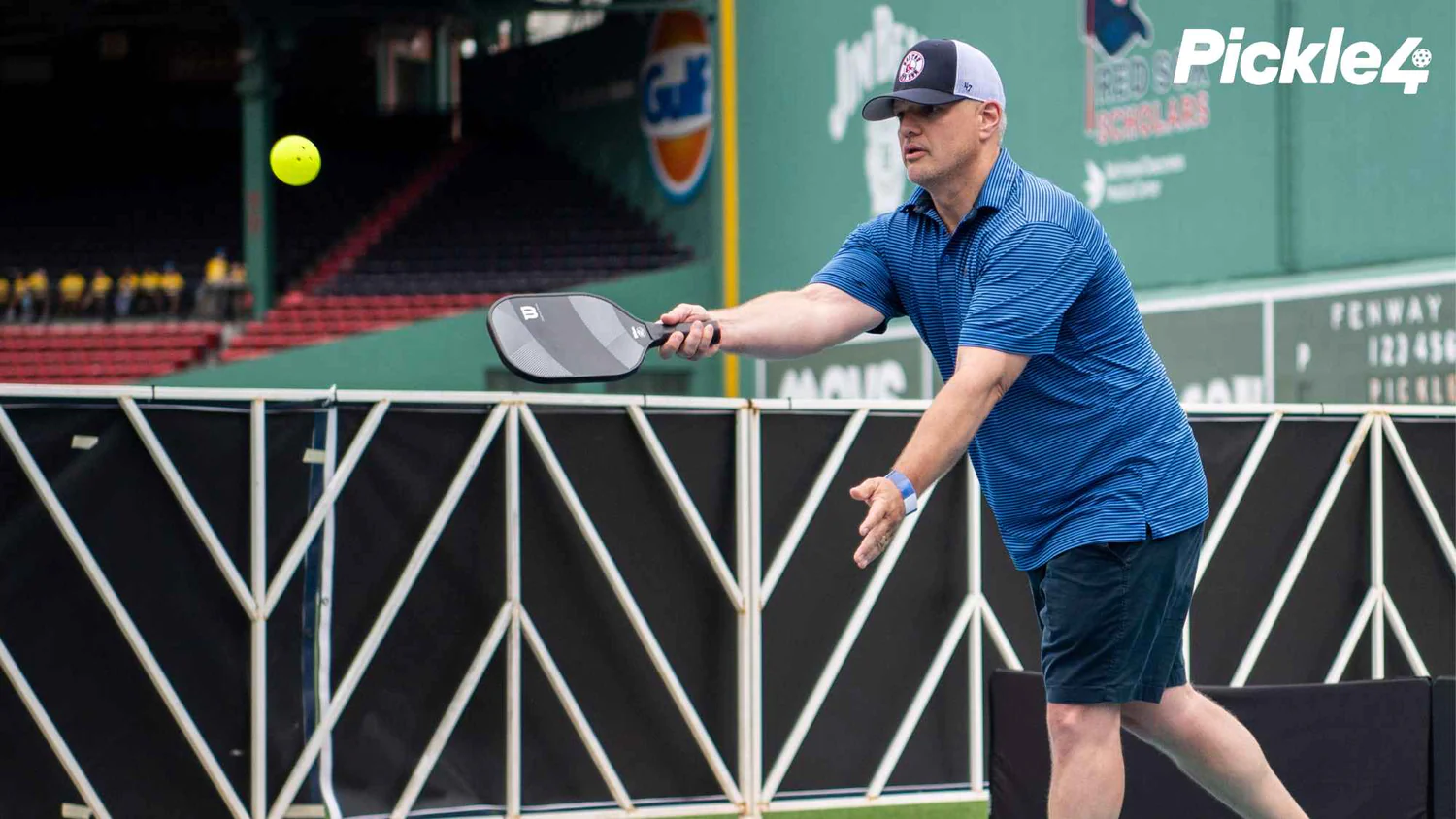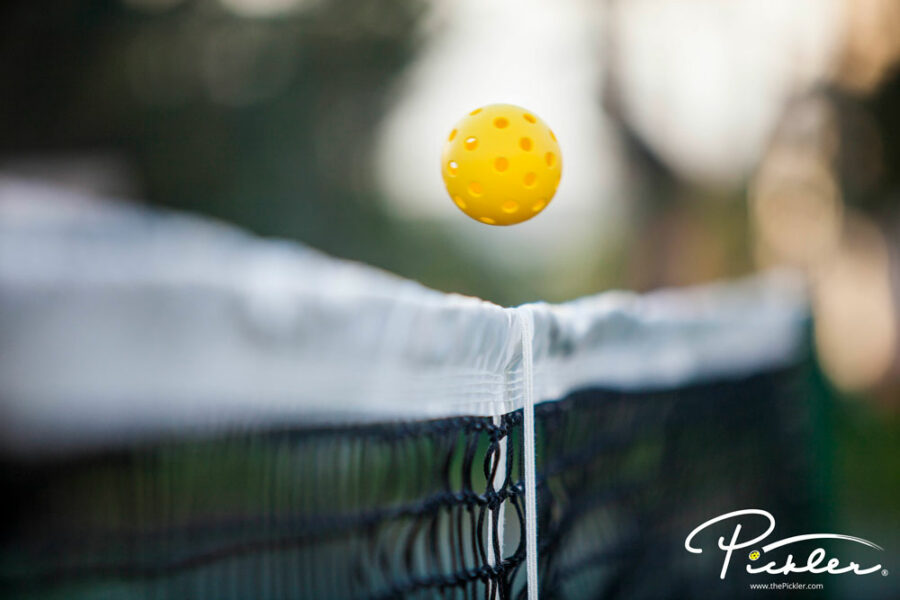A slice—which is a shot where you put backspin on the pickleball (i.e., spin that travels from 6 o’clock to 12 o’clock back toward the player that makes contact with the ball)—is becoming a popular shot for the return of serve on the pickleball court. A slice can be troubling for the serving team when trying to execute the all-important third shot for the following reasons:
- A slice will usually stay low to the ground after the bounce. Since the pickleball will usually stay low, the serving team will have more difficult in executing a third shot.
- The spin on the pickleball from a slice can create problems, as the pickleball could slide or skip upon contact.
So, how do you counterattack a slice return when you are the serving team on the pickleball court? Try these 3 options to counterattack a slice return on the pickleball court:
- Drive Through the Slice – Your first option to counterattack a slice on the pickleball court is to hit through the spin with a flat drive. By driving the pickleball, you are trying to avoid the heavy backspin from the slice and hoping to get an easier ball to hit from your opponents on the next shot (as you are anticipating that your opponents will simply block your shot back into the court). While you are able to hit through the spin, this is a tough shot to execute when the pickleball stays low to the ground (as the pickleball will do on a slice). This is because you will have to hit up on the drive, which can cause you to hit the pickleball either into the net or too high, sailing out of bounds. As a result, be cautious when driving the slice and consider taking some pace off of your drive to keep the pickleball in the court.
- Get Under the Pickleball and Drop It – The next option to counterattack a slice is to simply drop your third shot. However, it is critical that you:
a. Bend your knees and get low to the ground in order to get under the
pickleball (again, a slice will generally stay lower to the ground, so you
need to meet the pickleball down there); and
b. Firmly lift up squarely through the pickleball in order to hit through the
spin. If you are not intentional with your shot, then the slice can “eat
you up.” Also, be sure to give yourself some margin of error over the
pickleball net, as the spin will make your drop more difficult to execute. - Use the Spin to Your Advantage – The third option is a bit more of an advanced option, which is to attack the slice with top spin. The spin of a slice from your opponents will be moving from 6 o’clock to 12 o’clock. This is the same spin that you would hit if you hit top spin to your opponents. So, by hitting top spin, you would be using your opponents spin against them and trying to accelerate the spin for an even more aggressive shot back to your opponents. So, if your opponents are hitting a slice return to you, consider attacking the slice with a heavy top spin drop or drive for an aggressive third shot. You may be able to create some tricky movement on your ball.
Lastly, regardless of what option you use, it is imperative that you move your feet to set yourself up for the best shot possible, with contact on the pickleball being made out in front of your body. To do this, it is helpful to understand how a slice from your opponents affects the trajectory of the pickleball. Again, the slice has a tendency to keep the pickleball low to the ground. However, it also may cause the pickleball to travel laterally depending on what side of their body your opponents hit the slice (i.e., whether a forehand slice or a backhand slice). A slice has a tendency to travel laterally toward the side of the pickleball court that your opponents made contact on. For instance, if you are playing against two right-handed players, and your opponents hit a backhand slice, then the pickleball will typically travel toward your right-hand side of the court (which is the same side that their backhands are on). And, if your right-handed opponents hit a forehand slice, then the pickleball will have a tendency to travel to your left-hand side of the court (which is the same side that their forehands are on). Be wary of these tendencies with the slice, so you can anticipate where the pickleball will travel and better position your body to make the best shot possible.




